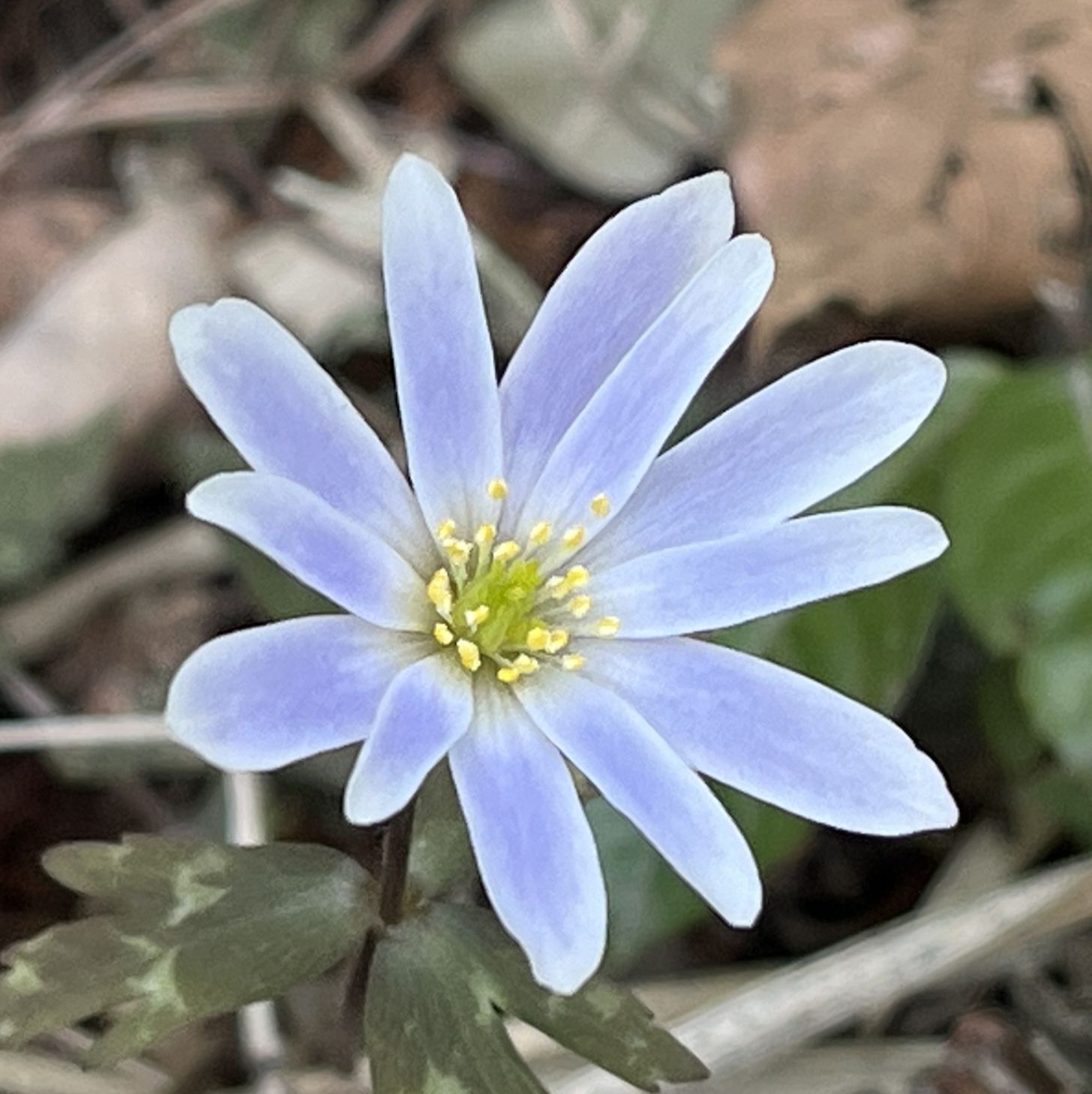ユキワリイチゲは、雪を割るように花茎を伸ばし、一輪の華を咲かせます。スプリング・エフェメラルの一種。花言葉は「幸せになる」です。
Anemone keiskeana grows a flower stalk from the snow and blooms a single flower. It is one of the spring ephemerals. The flower language is “to be happy.”
【仮名】ユキワリイチゲ, ルリイチゲ
【和名】雪割一華, 瑠璃一華
【英名】Anemone keiskeana
【学名】Anemone keiskeana
【誕生】03/ ??
【開花】03, 04月
【花色】White, Violet
ユキワリイチゲ
ユキワリイチゲの概要
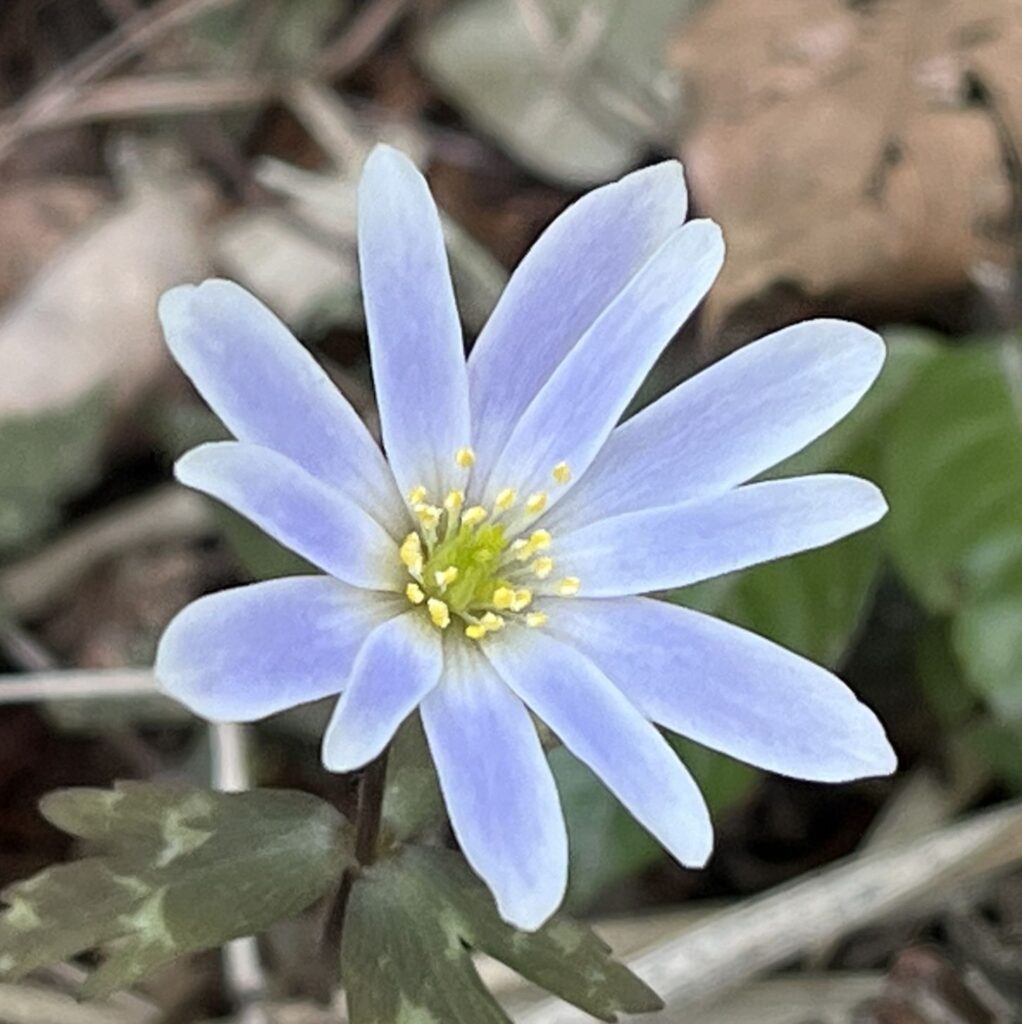
ユキワリイチゲはキンポウゲ科イチリンソウ属の多年草です。日本の本州中部から四国、九州まで分布し、山野で群生。秋に葉を伸ばして冬を越し、春に花を咲かせて夏に休眠します。「スプリング・エフェメラル(春の妖精)」と呼ばれる草花の一種。花言葉は「幸せになる」です。
ユキワリイチゲの名前
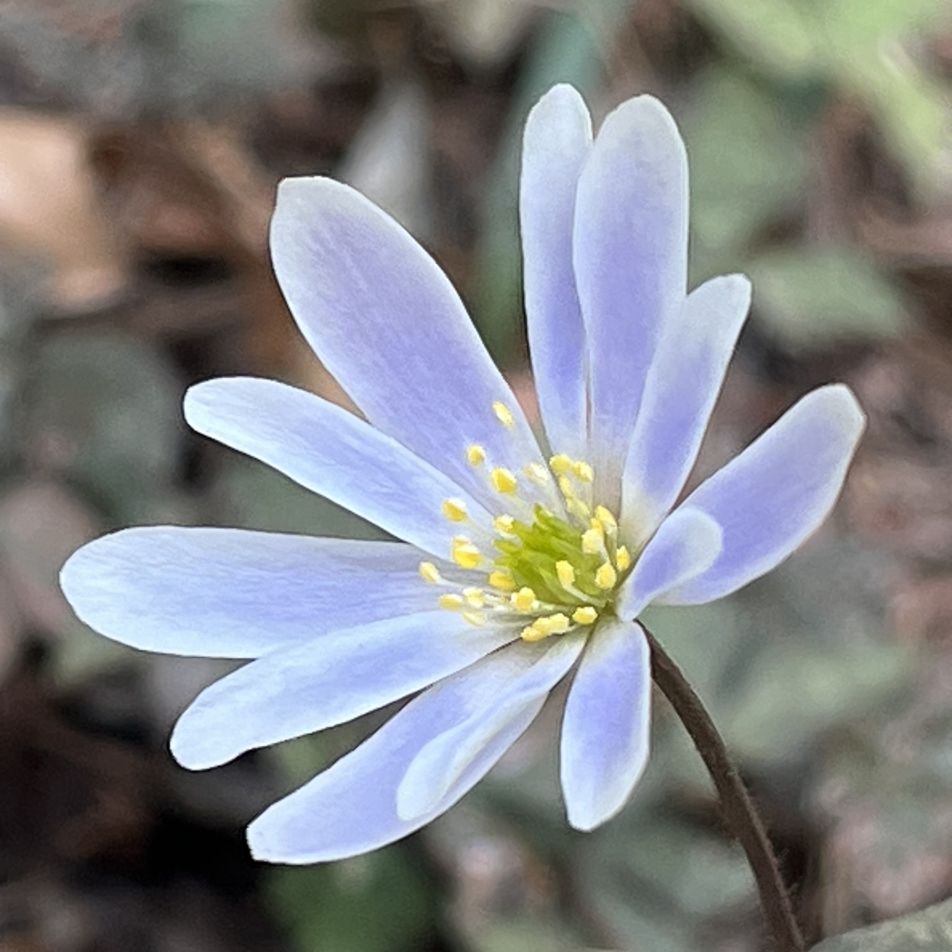
ユキワリイチゲは、「雪」を「割」るように花茎を伸ばし、「一」輪の「華」を咲かせます。花が青紫色を帯びるので「瑠璃一華」、葉の裏が赤紫色なので「裏紅草」とも。ラテン語の属名アネモネは「風」という意味です。種小名ケイスケアナは19世紀の植物学者・伊藤圭介に由来。
ユキワリイチゲの姿形
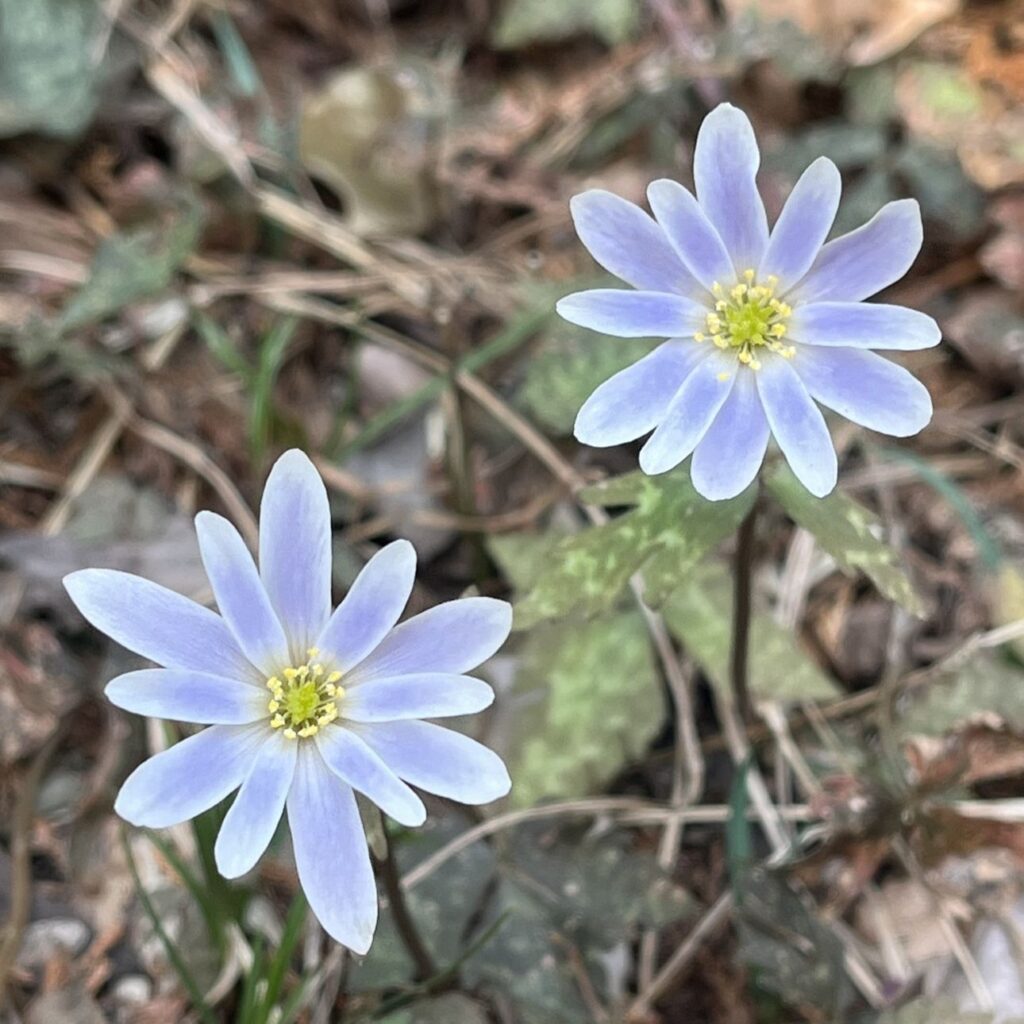
ユキワリイチゲは多肉質の地下茎で拡がります。秋には根生葉が伸長。小葉の縁には鋸歯があります。春には茎生葉が展開。錆び色の表面に斑が入ります。花は茎先で上を向いて咲き、花弁のように見える白色の萼片が10~20枚、葯が黄色の雄しべがたくさん。花後は痩果を結びます。
ユキワリイチゲの近縁
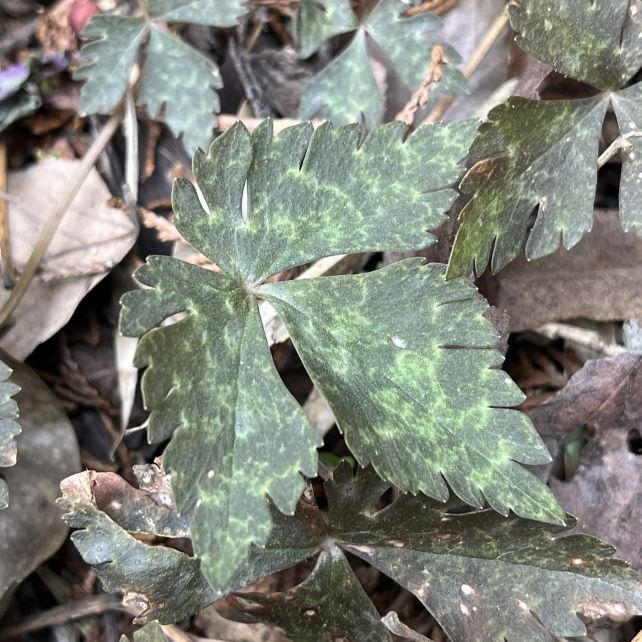
ユキワリイチゲの近縁「菊咲一華」は同じイチリンソウ属の多年草です。日本の北海道から本州の近畿地方まで分布。落葉広葉樹の林床などで自生する「スプリング・エフェメラル」の一種です。葉は3出複葉ですが、切れ込みが深く、表面が緑色。花は萼片が青紫色、葯が白色です。
Anemone keiskeana
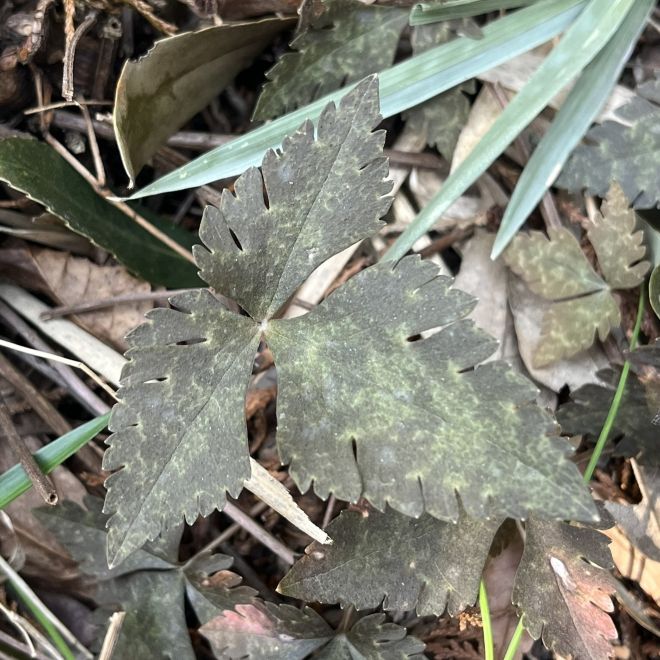
Anemone keiskeana is a perennial plant of the Ranunculaceae family. It is distributed from central Honshu to Shikoku and Kyushu in Japan, and grows in clusters in the mountains and fields. It grows leaves in autumn and survives the winter, blooms in spring, and goes dormant in summer. It is one of the flowers called “spring ephemerals.” The flower language is “to be happy.”
The Japanese name of Anemone keiskeana means “to grow a flower stalk from the snow and bloom a single flower.” It is also known as “a single lapis lazuli flower” because the flowers are violet, and “a grass with a red underside” because the underside of the leaves is reddish purple. The Latin genus name Anemone means “wind.” The specific name keiskeana comes from the 19th century botanist Keisuke Ito.
Anemone keiskeana spreads from a fleshy underground stem. In autumn, the basal leaves grow. The leaflets have sawtoothed edges. In spring, the stem leaves unfold. The rust-colored surface is mottled. A flower blooms upward at the end of the stem, with 10 to 20 white sepals that look like petals and many stamens with yellow anthers. After flowering, the plant produces an achene.
A closely related species of Anemone keiskeana, “Anemone pseudoaltaica,” is a perennial plant of the same genus. It is found from Hokkaido to the Kinki region of Honshu in Japan. It is one of the “spring ephemerals” that grow wild on the forest floor of deciduous broad-leaved trees. The leaves are trifoliate, but deeply incised and have a green surface. A flower has blue-purple sepals and white anthers.

